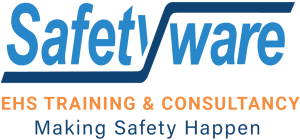Blog
Posted By: Agnes | Jun 23, 2020

Chemical Spill Response Preparedness
Major illegal dumping of marine toxic waste into Sungai Kim Kim, in Pasir Gudang and concentrated sulphuric acid spillage at Johor Department of Environment laboratory are the examples of chemical spills incidents probability of occurrence either in small or bigger scale. National Safety Council classified hazards into four types; chemical hazards, physical hazards, biological hazards, and ergonomic hazards. A chemical spill incident is defined as an uncontrolled release of the toxic substance which potentially causes harm to overall public health and the ecosystem of an environment. These spills range from major hazardous chemical spills to smaller-scale chemical spillage in the laboratory or facility.
In a bigger scale involving the industrial sector, there have been several instances of major industrial cases related to a chemical spill. Different chemicals will react differently based on their chemical properties. However, most of the chemicals have one common property; some were uncontrolled, involving fires, explosions or the release of toxic substances directly resulted in casualties or extensive damage to the environment and property.
When dealing with chemical spills, many questions need to be answered. What was spilt? How is the local environment affected or What's the best way to clean up the spill? The answer is very subjective as all spills are different dependant on the chemical properties and type of chemical involved.
Identify and evaluate chemical properties of chemicals
Initial step is to identify type of hazards of chemical properties of all chemicals used or produced in your facility. Before using, introducing, or producing any chemical, you should evaluate the consequences of potential spills to develop appropriate response procedure. Ensure all Safety Data Sheet for chemicals involved are readily available. Chemical properties of the chemicals used must be taken account such as flammability, toxicity level and reactivity to air or water.
Chemical spills can be categorized into two; either minor spill where you are able to clean up by your own or major spills which require external assistance such as Emergency Response Team. Minor spill characteristics usually does not cause any immediate adverse effect once released to the atmosphere. On the other hand, major spillage usually involved high reactivity of chemical properties and potential health risks towards human, property damage, or environmental threats. Note that some chemicals may exhibit more than one characteristic.
Evaluate potential impacts
Potential impact that may occur from a chemical spill can be magnified into major spill in the presence of several physical factors such as source of ignition and mixture of any chemicals. For instance, physical properties of acetone are highly volatile, and flammable may cause immediate adverse effect. Therefore, appropriate action plan should be drafted based on the chemicals used in your facility.
Draft out Chemical Spill Response Procedures
- Chemical spill response procedures should clearly outline:
- Involvement of individuals or Emergency Response Team during a spill incident
- Communication guideline
- Evacuation routes or zoning
- First aid procedure (if needed)
- Method of using chemical spill kit
- Chemical spill clean-up
- Disposal of contaminated equipment.
Proper training on spill clean-up procedures and specification of using personal protective equipment must be provided to the Emergency Response Team to ensure the effectiveness of measures taken. It essential to establish a good communication with local emergency responders such as BOMBA in case of any uncontrollable event took place at your facility. Maintaining a good working relationship and communication channel with local emergency responders will minimize the impact of incidents from spreading to the environment or cause any harm and injury towards human lives and property damage.
Chemical Spill Response Guidelines
Whenever spill occurs, first action is to notify related individuals such as environmental officer regardless of major or minor spills incident. For minor spill, ensure staff is properly trained and aware on how to contain the chemical by using the appropriate personal protective equipment. Major spill incident may require external assistance from Emergency Response Team. Trained Emergency Response Team should be able to use appropriate protective equipment and method to handle the specific chemical spills, as well as how to approach hazardous spills accidents in unfamiliar locations in the facility.
If you aware on the chemical properties of the chemical spill, a proactive approach can be conducted during spill clean-up. Based on previous example used such as acetone which have hazardous characteristics, immediately isolate or evacuate the area if necessary and remove any source of ignition by unplugging nearby electrical equipment. Next, is to increase ventilation through fume hoods or windows if possible.
Based on your identification and evaluation of chemicals in your facility, an appropriate type of chemical spill kit should be readily available. For flammable liquids, the efficient way to remove it removed by using spill pillows or pads to absorb and to control the extent of the spill. On the other hand, spills of most liquid acids or bases should be neutralised prior to clean-up. Confine and contain the spill using the appropriate spill kit absorbents and method.
The neutralized spill residue or the absorbent should be scooped, swept, or otherwise placed into a sealed and labelled container to be treated as hazardous waste. Ensure to distinguish any contaminated materials such as gloves and protective clothing from normal trash or waste before cleaning up all the chemical residues. Extra precautions for absorbent material are to add another packaging or layer before placed into the container for double protection. After spill clean-up operation been terminated, implement appropriate decontamination and cleaning procedure for any tools and reusable cleaning products used for spill clean-up.
Documentation
After cleaning up a spill, a complete incident and accident investigation report need to be documented. Such documentation is essential to avoid similar incidents in the future. In the report, few items need to be emphasized:
- Chemical involved in the incident
- Quantity, time and duration of spills
- Cause of the incident happened
- Anticipated health human effects, physical damage of property and environmental threats
Proper training and knowledge on the chemical used or produced in the facility is important to prevent additional casualties and environmental impact during a chemical spill event either in smaller or bigger scale. Hence, a standard operating procedure to respond towards chemical spills incident and emergency response procedure to make safety the paramount consideration.
By Syafiqah Nazifa
Safetyware EHS Consultancy Sdn. Bhd.
Recent Articles

Posted By: Nur Afifa Binti Sazali
Jan 10, 2024

Posted By: Nur Afifa Binti Sazali
Jan 02, 2024

Posted By: Nur Afifa Binti Sazali
Dec 08, 2023

Posted By: Nur Afifa Binti Sazali
Dec 07, 2023

Posted By: Nur Afifa Binti Sazali
Dec 01, 2023
Plot 237,
Lengkok Perindustrian Bukit Minyak 3,
Bukit Minyak Industrial Estate,
14100 Simpang Ampat, Penang, Malaysia.
Enquiries :
[email protected]
Call Us :
Tel : +604-5023 882 (8 lines)
Toll Free : 1300-22-3882
